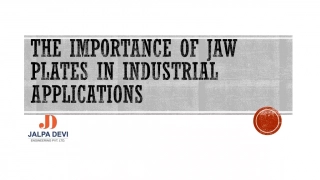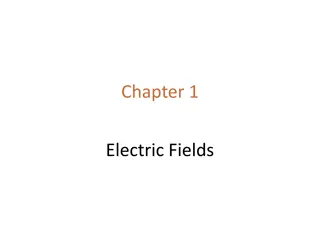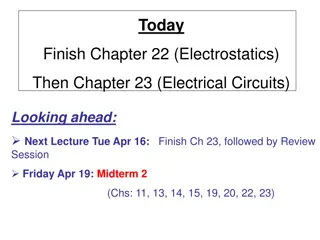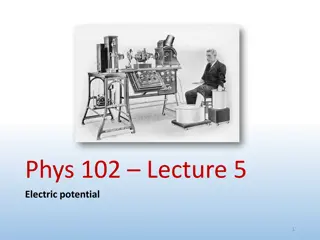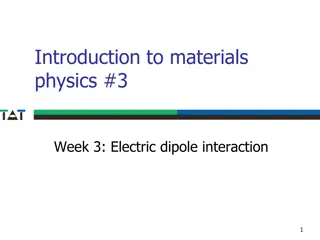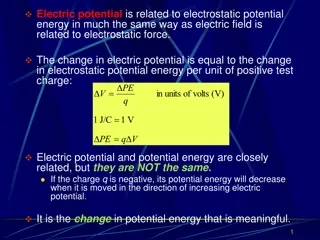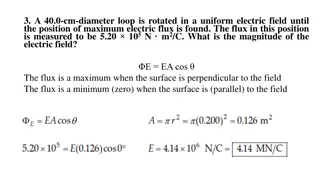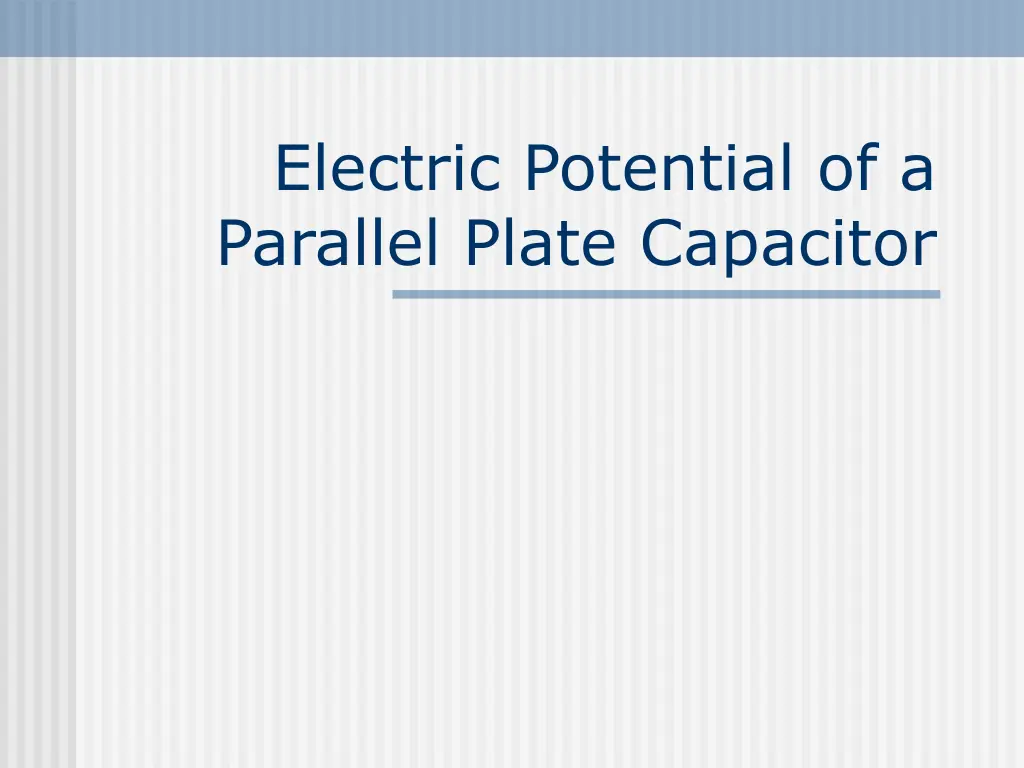
Understanding Capacitors in Electrical Systems
Explore the concepts of electric potential, characteristics, and work in capacitors, with examples involving parallel plates and the movement of charges. Learn about potential difference, kinetic energy, work done, speeds, forces, and accelerations of particles in capacitor setups.
Download Presentation

Please find below an Image/Link to download the presentation.
The content on the website is provided AS IS for your information and personal use only. It may not be sold, licensed, or shared on other websites without obtaining consent from the author. If you encounter any issues during the download, it is possible that the publisher has removed the file from their server.
You are allowed to download the files provided on this website for personal or commercial use, subject to the condition that they are used lawfully. All files are the property of their respective owners.
The content on the website is provided AS IS for your information and personal use only. It may not be sold, licensed, or shared on other websites without obtaining consent from the author.
E N D
Presentation Transcript
Electric Potential of a Parallel Plate Capacitor
Characteristics of a Capacitor + + + + + + + + + + + + + + + - - - - - - - - - - - - - - - Uniform Electric Field Two equal and oppositely charged plates qo B qo C E = CONSTANT qo A Since the electric field is constant, the force acting on a charged particle will be the same everywhere between the plates. Fe = qoE FA = FB = FC
Work moving a charge through an electric field in a Capacitor + + + + + + + + + + + + + + + - - - - - - - - - - - - - - - D A B ???= ??? ??? qo qo F = qoE F = qoE ???= ??? ? dB dA C qo What if instead of traveling from point A to point B, the charge moved from point C to D? If ???= ??? ?, then what is WCD? WCD = 0 Joules because the force acts perpendicular to the direction of motion. Do you remember that W = F d cos ?
Electric Potential of a Capacitor An alternative From mechanics, ? = ??. From the previous slide, ? = ???? From the reference table, ? = ?/?? ? =??? ?? + + + + + + + + + + + + + + + - - - - - - - - - - - - - - - Two equal and oppositely charged plates ? =?? A B ?? qo F = qoE ? =???? Uniform Electric Field d ?? ? = ??
Example 5:Parallel Plates A spark plug in an automobile engine consists of two metal conductors that are separated by a distance of 0.50 mm. When an electric spark jumps between them, the magnitude of the electric field is 4.8 x 107 V/m. What is the magnitude of the potential difference V between the conductors? ? = ?? ? = (4.8 107 ?/?)(5.0 10 4 ?) ? = 24,000? d
Example 4: Parallel Plates A proton and an electron are released from rest from a similarly charged plate of a capacitor. The electric potential is 100,000 V and the distance between the two plates is 0.10 mm. 1. Which charge will have greater kinetic energy at the moment it reaches the opposite plate? 2. Determine the amount of work done on each particle. 3. Determine the speed of each particle at the moment it reaches the opposite plate. 4. Determine the magnitude of the force acting on each particle. 5. Determine the magnitude of the acceleration of each particle.
Example 4: Parallel Plates(cont.) + + + + + + + + + + + + + + + - - - - - - - - - - - - - - - p+ e- d Begin by drawing a picture and listing what is known: ? = 100,000? ? = 0.10 ?? = 1.0 10 4? ??= ??= 1.6 10 19? (ignore the sign. We are only interested in magnitude.)
Example 4: Parallel Plates(#1 & #2) For #1, you could answer #2 first to verify. The answer is that the kinetic energy of both particles will be the same Why? because of the formula needed in question #2 applies to both charges, and Work = KE. Hence: Wproton = Welectron qprotonV = qelectronV Wproton = Welectron = (1.6 10 19?)(100,000?) Wproton = Welectron = 1.6 10 14?
Example 4: Parallel Plates(#3) Apply the work-energy theorem to determine the final speed of the electron and proton. ? = ?? Since the initial kinetic energy is equal to 0J: ? = ??? ? = ??? 2 14 (2)( ( m ) (2)(1.6 10 (1.67 10 ) ) W J = = = 6 4.38 10 / v m s Proton: f 27 ) kg proton 14 (2)( ( m ) (2)(1.6 10 (9.11 10 ) ) W J = = = 8 1.87 10 / v m s Electron: f 31 ) kg electron
Example 4: Parallel Plates(#4) Since ? = ??, it will be the same for both particles because their charges are the same and the electric field is uniform between two parallel plates. We also know that ? = ? ?. Since we know the distance between the plates and the work done to move either charge from one plate to another, we can determine the force as follows: ?=1.6 10 14? ????=? 1.0 10 4?= 1.6 10 10?
Example 4: Parallel Plates(#5) Since we have the force acting on each particle, we can now calculate the acceleration of each particle using Newton s 2nd Law. 10 1.6 10 1.67 10 F N kg = = = 9.6 10 16 2 / a m s 27 m proton F 10 1.6 10 9.11 10 N kg = = = 1.8 10 20 2 / a m s 31 electron m




